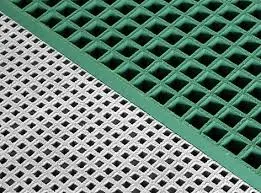
-
 Afrikaans
Afrikaans -
 Albanian
Albanian -
 Amharic
Amharic -
 Arabic
Arabic -
 Armenian
Armenian -
 Azerbaijani
Azerbaijani -
 Basque
Basque -
 Belarusian
Belarusian -
 Bengali
Bengali -
 Bosnian
Bosnian -
 Bulgarian
Bulgarian -
 Catalan
Catalan -
 Cebuano
Cebuano -
 China
China -
 China (Taiwan)
China (Taiwan) -
 Corsican
Corsican -
 Croatian
Croatian -
 Czech
Czech -
 Danish
Danish -
 Dutch
Dutch -
 English
English -
 Esperanto
Esperanto -
 Estonian
Estonian -
 Finnish
Finnish -
 French
French -
 Frisian
Frisian -
 Galician
Galician -
 Georgian
Georgian -
 German
German -
 Greek
Greek -
 Gujarati
Gujarati -
 Haitian Creole
Haitian Creole -
 hausa
hausa -
 hawaiian
hawaiian -
 Hebrew
Hebrew -
 Hindi
Hindi -
 Miao
Miao -
 Hungarian
Hungarian -
 Icelandic
Icelandic -
 igbo
igbo -
 Indonesian
Indonesian -
 irish
irish -
 Italian
Italian -
 Japanese
Japanese -
 Javanese
Javanese -
 Kannada
Kannada -
 kazakh
kazakh -
 Khmer
Khmer -
 Rwandese
Rwandese -
 Korean
Korean -
 Kurdish
Kurdish -
 Kyrgyz
Kyrgyz -
 Lao
Lao -
 Latin
Latin -
 Latvian
Latvian -
 Lithuanian
Lithuanian -
 Luxembourgish
Luxembourgish -
 Macedonian
Macedonian -
 Malgashi
Malgashi -
 Malay
Malay -
 Malayalam
Malayalam -
 Maltese
Maltese -
 Maori
Maori -
 Marathi
Marathi -
 Mongolian
Mongolian -
 Myanmar
Myanmar -
 Nepali
Nepali -
 Norwegian
Norwegian -
 Norwegian
Norwegian -
 Occitan
Occitan -
 Pashto
Pashto -
 Persian
Persian -
 Polish
Polish -
 Portuguese
Portuguese -
 Punjabi
Punjabi -
 Romanian
Romanian -
 Russian
Russian -
 Samoan
Samoan -
 Scottish Gaelic
Scottish Gaelic -
 Serbian
Serbian -
 Sesotho
Sesotho -
 Shona
Shona -
 Sindhi
Sindhi -
 Sinhala
Sinhala -
 Slovak
Slovak -
 Slovenian
Slovenian -
 Somali
Somali -
 Spanish
Spanish -
 Sundanese
Sundanese -
 Swahili
Swahili -
 Swedish
Swedish -
 Tagalog
Tagalog -
 Tajik
Tajik -
 Tamil
Tamil -
 Tatar
Tatar -
 Telugu
Telugu -
 Thai
Thai -
 Turkish
Turkish -
 Turkmen
Turkmen -
 Ukrainian
Ukrainian -
 Urdu
Urdu -
 Uighur
Uighur -
 Uzbek
Uzbek -
 Vietnamese
Vietnamese -
 Welsh
Welsh -
 Bantu
Bantu -
 Yiddish
Yiddish -
 Yoruba
Yoruba -
 Zulu
Zulu
Exploring Innovative Solutions for FRP Fittings in Modern Applications
Understanding FRP Fittings A Comprehensive Guide
Fiber-reinforced plastic (FRP) fittings have revolutionized various industries by offering lightweight, durable, and corrosion-resistant solutions for numerous applications. FRP materials are composites made from a polymer matrix reinforced with fibers, typically glass, carbon, or aramid. This combination results in a material that possesses remarkable strength-to-weight ratios, making it an ideal choice for many demanding environments. In this article, we will explore the benefits, applications, and installation considerations related to FRP fittings.
Benefits of FRP Fittings
1. Corrosion Resistance One of the most significant advantages of FRP fittings is their excellent resistance to corrosion. Unlike traditional metal fittings, FRP does not rust or degrade when exposed to harsh chemicals, moisture, or varying environmental conditions. This makes them particularly useful in industries such as wastewater treatment, chemical processing, and marine applications.
2. Light Weight FRP fittings are significantly lighter than their metal counterparts. This reduced weight translates into lower shipping costs, easier handling during installation, and less structural support required. In many cases, this makes FRP fittings a practical choice for retrofitting projects where existing infrastructure cannot support the weight of heavier materials.
3. High Strength Despite their lightweight nature, FRP fittings boast impressive strength and durability. The fibers used in the composite enhance its structural integrity, allowing it to withstand significant mechanical stress and environmental challenges. This characteristic is crucial in applications requiring high performance under extreme conditions.
4. Versatility FRP fittings can be molded into various shapes and sizes, offering customization options that can suit specific project needs. Whether for piping systems, connectors, or joints, their adaptability makes them suitable for a wide array of applications across different industries.
5. Reduced Maintenance Because FRP fittings resist corrosion and degradation over time, they require less maintenance than traditional materials. This longevity ultimately translates into cost savings for businesses, as they will need to replace or repair fittings less frequently.
Applications of FRP Fittings
FRP fittings find extensive use in various sectors. Here are some common applications
- Chemical Processing In environments where aggressive chemicals are used, FRP fittings offer reliable performance without the risk of corrosion that comes with metal. - Water and Wastewater Management FRP fittings are employed in pipes, valves, and other components for water treatment facilities, ensuring longevity and quality in water delivery systems.
frp fittings

- Oil and Gas Industry The harsh environments characteristic of the oil and gas sector necessitate materials that can endure pressure, heat, and corrosion. FRP fittings meet these requirements effectively.
- Construction and Infrastructure Used in bridge decks, walkways, and other structures, FRP fittings contribute to the building of durable, lightweight infrastructures.
Installation Considerations
While FRP fittings offer numerous advantages, there are certain considerations to keep in mind during installation
- Proper Techniques It is essential to use the correct techniques when installing FRP fittings to prevent damage and ensure a secure fit. Training or guidance from manufacturers is recommended.
- Thermal Expansion Being a composite material, FRP fittings can expand and contract with temperature changes. Adequate design considerations should be made to accommodate these variations.
- Joining Methods Different methods for joining FRP fittings may be required depending on the specific application—such as adhesive bonding, mechanical fastening, or flanging.
- Compatibility with Other Materials When integrating FRP fittings with other materials, compatibility must be assessed to avoid corrosion or other issues.
Conclusion
FRP fittings are transforming the landscape of construction, manufacturing, and infrastructure projects. With their significant advantages—such as corrosion resistance, lightweight design, and high strength—they are becoming increasingly popular across various industries. As technology advances, the potential applications of FRP fittings will continue to expand, offering even more innovative solutions for modern challenges. Understanding these advantages and considerations is crucial for anyone looking to incorporate FRP fittings into their projects.









